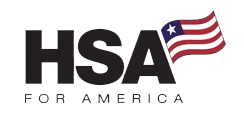Cost containment in healthcare benefits is becoming increasingly critical for employers of all sizes.

Cost Containment in Healthcare
In 2025, the average annual premium for family coverage under employer-sponsored health plans exceeds $25,000. This represents a 20% increase over the past five years, according to the Kaiser Family Foundation.
At the same time, prescription drug prices rose by 8% annually on average, driven by the increasing reliance on high-cost specialty medications (AHIP.org).
In parallel, mental health claims have surged by 25% since the pandemic began, further straining employer budgets (Harvard Business Review).
As a result, the impact of these rising costs on employers is profound. According to a survey by the Society for Human Resource Management (SHRM), 79% of employers cited healthcare expenses as one of their top three financial concerns (SHRM.org).
Ultimately without effective cost-containment of healthcare expenses, businesses face reduced competitiveness, lower profitability, and strained employee relations.
Compare Pricing on the Best Insurance Plans Available
Strategy 1: Implement High-Deductible Health Plans (HDHPs) with Health Savings Accounts
HDHPs offer lower premiums by increasing deductibles – shifting more responsibility to employees.
Employers typically enjoy savings of 9% to 12% on premium costs per employee compared to standard group premiums, according to KFF. This alone can save up to a thousand dollars per employee per year, and about $2,000 per year per worker with a family plan.
HSA assets enjoy a triple tax benefit, unmatched elsewhere in the tax code.
- Contributions are pre-tax
- Assets grow tax-deferred as long as they remain in the HSA
- Withdrawals to pay qualified medical expenses are tax and penalty-free
Strategy 2: Embrace Health Sharing
Health sharing plans offer an innovative and much more affordable alternative to traditional group health insurance.
Unlike traditional insurance, these aren’t insurance products. Instead, health share plans are voluntary non-profit associations of health-conscious people who agree to share one another’s healthcare expenses.
In this model, the cost of any individual’s unexpectedly high medical expense is thus shared among thousands of members – spreading the risk, and softening the financial impact on any single individual or household.
Members contribute monthly to a shared pool, which is used to pay members’ eligible medical expenses.
These plans can reduce administrative overhead. And they typically save employers up to 50% compared to conventional insurance.
Advantages of Health Sharing
✔ Freedom of Provider Choice – No restrictive networks; members can see any doctor, hospital, or specialist, including top facilities like Mayo Clinic and Cleveland Clinic.
✔ Faster Access to Care – Avoids long wait times by allowing members to choose providers with shorter appointment availability.
✔ Lower Utilization Costs – Easier access to primary care reduces unnecessary ER and urgent care visits.
✔ Cost Savings – Typically much more affordable than traditional group health insurance.
Disadvantages of Health Sharing
✖ Pre-Existing Condition Limitations – Waiting periods apply before costs related to pre-existing conditions are shared.
✖ Not Always Suitable for All Employees – Those with ongoing medical needs may require a more comprehensive option.
✖ Taxable to Employees – Employer contributions are subject to taxes, unlike traditional health insurance premiums.
Case Study: Health Sharing Cost Savings
For example, a small retail business in Colorado switched to health sharing in 2021.
To ensure compliance, the owner combined a health sharing plan with a Minimum Essential Coverage (MEC) option to comply with ACA requirements.
By educating employees about plan specifics and limitations, the company successfully reduced annual healthcare costs by 40% while maintaining employee satisfaction.
Strategy 3: Promote Preventive Care and Wellness Programs
Preventive care identifies health issues early, reducing long-term costs.
Wellness programs foster a culture of health in the workplace, improving employee well-being and productivity.
Additionally, a healthy, active, and fit workforce is a much less expensive workforce. Why is this important? Because preventable and manageable chronic conditions like diabetes and heart disease account for 90% of the nation’s $4.3 trillion annual healthcare expenditure.
Employers who can reduce smoking, obesity, and a1c levels in the workforce can expect significant long-term savings in both direct and indirect healthcare costs. A quality corporate wellness program, energetically run, is more than worth the investment.
ROI analysis shows that wellness programs deliver substantial savings. For every $1 invested, companies can save up to $3 through reduced healthcare costs and increased productivity.
Strategy 4: Leverage Telemedicine
Telemedicine offers a cost-effective solution for minor or routine healthcare needs.
It reduces in-person visits and emergency room utilization, saving time and money for employees and employers alike. With telemedicine technology (typically an app such as Healow on an employee’s mobile phone, but even that is optional).
A recent Penn Medicine study found that telemedicine reduced group healthcare costs by nearly 25% per doctor visit.
In practice, telemedicine also improves patient experience by reducing appointment wait times and eliminates the need for workers to take a half day or more off work to see a doctor. So there are indirect benefits in addition to the direct cost savings of telehealth benefits.
Tip: To leverage telemedicine, employers should partner with a reputable third-party telemedicine provider and integrate the service seamlessly into existing health plans. Also, invest in a serious employee education effort to help workers understand the benefits of telemedicine and how to use their apps to access care.
Strategy 5: Insulate Yourself From Future Premium Increases With a Level-Funded Health Plan
Level-funded health plans combine the cost predictability of fully insured plans with the flexibility of self-funding.
It’s practical even for relatively small companies. You can easily limit your risk and save 8% to 10% compared to an off-the-shelf traditional group health insurance plan from an outside carrier.
How Level-Funded Plans Work
- Choose a Level-Funded Plan
- Your business selects a level-funded health plan as an alternative to traditional fully insured or self-funded options.
- This plan gives you predictable monthly costs while offering potential savings if claims are lower than expected.
- Pay a Fixed Monthly Fee
- Each month, you pay a set amount that covers three key components:
- Claims Fund: Covers expected medical claims for your employees.
- Administrative Fees: Pays for plan management, claims processing, and network access.
- Stop-Loss Insurance: Protects your company from unexpectedly high claims.
- Each month, you pay a set amount that covers three key components:
- Protect Against High Claims with Stop-Loss Insurance
- Stop-loss coverage ensures that if claims exceed projections, your business isn’t responsible for unlimited costs.
- Specific Stop-Loss: This covers an individual employee’s medical expenses beyond a set threshold.
- Aggregate Stop-Loss: Covers total group claims if they exceed expectations.
- Pay Employee Claims from Your Claims Fund
- When your employees use healthcare services, claims are paid from your claims fund.
- If claims are higher than expected, stop-loss insurance covers the excess.
- Review Claims at Year-End
- At the end of the plan year, your actual claims are compared to your expected claims.
- Receive a Refund or Credit if Claims Are Lower Than Expected
- If your total claims are lower than expected, you may receive a refund or a credit toward future premiums.
- Some plans allow you to roll over surplus funds to reduce next year’s costs.
- If claims are higher than expected, stop-loss insurance ensures your financial protection.
- Renew and Adjust Your Plan
- Each year, you’ll review your plan and adjust costs based on past claims experience.
- You can modify coverage, adjust employee contributions, or switch providers if needed.
With a level-funded plan, you gain financial predictability, potential savings, and protection against large, unexpected claims—helping you manage healthcare costs effectively for your business.
LEARN MORE: Advanced Large Group Health Insurance Strategies
Strategy 6: Manage Pharmacy Costs
Prescription drugs account for a significant portion of healthcare spending.
For larger employers, this avenue is especially effective, as they can leverage substantial purchasing power to negotiate drug prices. Large self-insured groups don’t pay the full retail price for their plan members’ prescription drugs.
In practice, large, well-run group plans negotiate with pharmacy benefits managers and often receive significant rebates on member drug purchases. These rebates, in turn, can help offset the cost of the plan.
Nevertheless, even smaller employers can manage these costs through strategies such as encouraging the use of generic drugs and incorporating tiered pricing.
Case Study: A County Health Plan Saves $1.4 Million/Year By Renegotiating Drug Benefits
Lehigh County, Pennsylvania discovered it had been overpaying for their employees’ prescription drugs by nearly $1.4 million per year.
Their new comptroller discovered that they had failed to negotiate the best available deal with the County’s pharmacy benefits manager. They went back to their pharmacy benefits vendor and renegotiated the contract, saving millions of dollars since 2019.
Additionally, a Commonwealth Fund study analyzed drug utilization data from 15 self-insured plan sponsors. The findings indicated that by reducing the use of high-cost, low-value drugs through improved formulary management, plan sponsors could achieve annual savings ranging from 3% to 24% of their overall pharmacy spending.
Strategy 7: Offer Direct Primary Care
Direct primary care, or DPC, is an increasingly popular subscription-based model for providing affordable access to primary care doctors.
This model eliminates insurance companies from the equation. Instead, employees (or your plan) pays a flat monthly subscription.
In return, plan members receive as many appointments as necessary to treat their primary care medical issues. There is no additional cost for the visit. No deductibles, no copays, no coinsurance to worry about.
Offering direct primary care has multiple advantages:
- Employees can see a primary care doctor as needed without worrying about cost.
- Doctor-patient loads are much smaller.
- Appointment times are much longer than typical for traditional insurance-based practices.
- Same-day or next-day appointments are routinely available.
- Telehealth and phone appointments are free and convenient
- Patient satisfaction rankings are very high among DPC practices. This translates to employee satisfaction and a superior overall healthcare experience.
Strategy 8: Offer Employee-Paid Voluntary Benefits
Voluntary benefits are a way employers can provide employees with a range of valued benefits, sweetening the compensation package––at little or no cost to the employer.
Offering a range of voluntary benefits can also help employers save on healthcare costs, reduce tax liabilities, and improve employee satisfaction.
Cost Savings with Voluntary Benefits
A well-designed voluntary benefits program can help employees transition from lower-cost employers to high-deductible health plans (HDHPs) with lower premiums.
Employees can mitigate the financial burden of higher deductibles by selecting voluntary benefits like hospital indemnity, emergency coverage, or critical illness policies.
These policies provide employees with direct cash payouts to cover unexpected medical expenses, reducing the risk of delayed care and improving overall health outcomes.
Additionally, offering voluntary benefits through a Section 125 Cafeteria Plan allows employees to pay premiums on a pre-tax basis. This reduces taxable income for employees and lowers payroll taxes for employers, creating additional cost savings.
Improved Cost Control with Higher Deductible Plans
Transitioning from a traditional health plan with a $1,500 deductible to an HDHP with a $3,000 deductible can lower premium costs by 15% to 20%.
By pairing this shift with voluntary benefits, employees still feel protected against unexpected expenses, while employers reap the financial advantages of reduced premiums.
Strategy 9: Empower Employees With Health Reimbursement Arrangements
A Health Reimbursement Arrangement (HRA) is a tax-advantaged benefit employers can offer to reimburse employees for qualified medical expenses, such as health insurance premiums, copays, and prescriptions.
Importantly, there are different types of HRAs. However, the HRA generally allows employers to reimburse workers with tax-free dollars for eligible medical expenses, typically including individual and family health insurance premiums.
Additionally, these funds are not taxable to employees, and unused amounts can often roll over, depending on plan design.
How HRAs Help in Cost Containment of Healthcare
Health Reimbursement Arrangements help employers reduce costs in several ways:
- Defined Contribution Approach
Employers control healthcare spending by setting fixed reimbursement limits. This eliminates unpredictable cost increases associated with traditional group health insurance premium hikes. - Tax Advantages
HRA contributions are tax-deductible for employers and tax-free for employees, lowering the employer’s overall tax liability. They are also free of payroll taxes. - Lower Premiums with Individual Coverage
HRAs like QSEHRA or ICHRA enable employees to purchase individual health insurance plans, which can often be more affordable than group plans, particularly for small businesses. More than that, they also eliminate the “one-size-fits-all” problem common to group plans. Employers in these types of HRAs can use their benefit to purchase any ACA-qualified health insurance plan available in their state. - Cost-Effective Customization
Employers can tailor HRAs to meet specific workforce needs (e.g., offering higher reimbursements for full-time employees and lower or no reimbursements for part-time staff). - No Premium Sharing or Minimum Participation Requirements
Unlike traditional group health insurance, HRAs don’t require employers to pay a specific portion of employee premiums or meet participation thresholds. This helps avoid needless costs and keeps your plan focused and streamlined. - Unused Funds Savings
In most HRAs, any unused funds revert to the employer at the end of the plan year (unless rollover options are allowed), preventing wasted spending.
Learn More: Why Smart Employers Are Dropping Group Health for ICHRA and DPC
Strategy 10: Offer a Health Savings + MEC Option Alongside A Level-Funded Plan
Compared to HDHPs and health sharing plans, this is a less well-known option.
However, it can be tremendously effective for some businesses—especially those with relatively healthy workforces.
In this model, an applicable large employer (one with 50 full-timers or more) would create a level-funded health plan, typically with a stop-loss policy to limit risk.
They would then offer all employees a choice:
- Option 1: Join the level-funded health plan (one that satisfies the ACA’s minimum value and affordability requirements.
- Option 2: Join a much less expensive health sharing plan, combined with a minimum essential coverage (MEC) plan that meets Affordable Care Act requirements.
A health sharing plan is a cost-effective way to protect employees against the devastating potential costs of large and catastrophic medical events. The MEC plan is there to cover basic preventive care services and to meet ACA coverage requirements.
Offering these plans in combination, when properly structured, shields ALEs from having to pay onerous “shared responsibility penalties” if an employee goes to the individual marketplace and receives a subsidy.
Since you’re offering a qualifying level funded plan that is both affordable and pays at least 60% of expected medical costs, you’ll satisfy the ACA employer mandate.
Large Group Case Study: How One Company Cut Group Healthcare Costs By More Than 30%
A manufacturing company, SteelFab Inc., with 300 full-time employees, faced increasing costs under its traditional group health insurance plan.
The annual premiums were growing at a rate of 8% annually, reaching $2.4 million in 2024. To promote cost containment in healthcare costs and offer employees flexible options, SteelFab dropped its fully-insured traditional health insurance plan and instead offered workers a choice between an ACA-compliant level-funded health plan and a combination of health sharing + Minimum Essential Coverage (MEC).
Plan Design
Employees could choose the option that best fits their needs.
- Level-Funded Health Plan: A partially self-funded plan with stop-loss insurance. Employees had access to a broad PPO network, with low deductibles and predictable costs. Annual costs averaged $8,000 per employee for individuals and $22,000 for families.
- Health Sharing + MEC: A non-insurance health sharing program, combined with a MEC plan to meet ACA compliance rules. This option cost the company an average of $4,800 per employee for individuals and $14,000 for families annually.
65% of employees enrolled in family coverage, while 35% of employees enrolled in individual plans.
Compare Pricing on the Best HealthShare Plans Available
SteelFab Corp: Cost Benefits of Switching From Fully Insured Plan to Level-Funded/Health Sharing + MEC Structure
| Category | Employees Covered | Traditional Fully-Insured Cost | Actual Cost | Savings | Savings (Compared to Traditional Fully-Insured Group Premiums |
|---|---|---|---|---|---|
| Health Sharing + MEC | 150 | $2,893,000 | $1,607,600 | $1,285,400 | 44.44% |
| Level-Funded Plan | 150 | $2,893,000 | $2,304,000 | $589,000 | 20.37% |
| Total | 300 | $5,786,000 | $3,911,600 | $1,874,400 | 32.39% |
The level-funded plan was structured to meet the requirements of a high-deductible health plan. So, employees were eligible to make pre-tax contributions to health savings accounts.
The company was very pleased with the savings generated. This year, they plan to use part of the savings generated to begin matching contributions to employee HSAs.
Get Started Implementing Your Cost Containment In Healthcare Strategy
Proactive healthcare cost management benefits both employers and employees.
Employers ready to take the next step should prepare an up-to-date employee census, including demographic and benefit information. This data is crucial for tailoring cost-saving strategies to your workforce’s unique needs.
Then, contact a Personal Benefits Manager today for expert analysis, personalized recommendations, and implementation support. Appointments are free – all our costs are paid for by the insurance companies, health sharing organizations, and other vendors you select. The sooner you act, the sooner you can start realizing the savings.
For Further Reading:
- Health Benefits for Restaurant Workers – An Employer’s Guide
- How To Start a Section 125 Cafeteria Plan
- Everything You Need to Know About HRAs for Small Businesses
- HSAs, FSAs, and HRAs –– Oh, My! How Small Businesses Can Save on Healthcare Costs
- 2025 Employee Benefits Contribution Limits, Thresholds, and Updates for Employers
- The Small Business Guide to Excepted Benefits Health Reimbursement Arrangements (EBHRAs)
- The 2025 Year-End Employee Benefits Compliance Guide
- Telehealth Benefits: A Key Advantage in Today’s Workplace

Hi! I’m Misty Berryman, and I’m one of your Personal Benefits Managers. I like working with HSA for America because we’re creating solutions to healthcare problems. Our focus on money-saving alternatives like HSA plans and health sharing programs, and the variety of health share programs we offer, are what set us apart. Read more about me on my Bio page.



